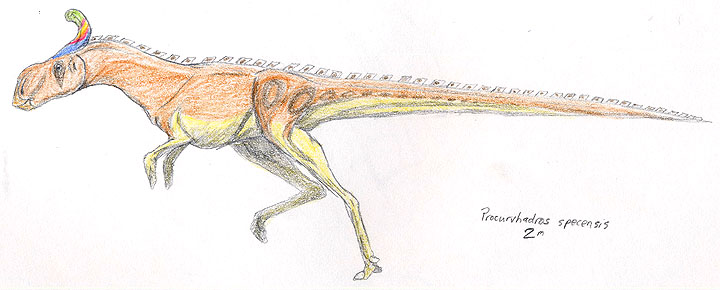

During the Eocene and Oligocene, North America experienced a hadrosaur boom, with a number of new clades evolving the take the place of the extinct North American ceratopsians. One of these new groups was Megacaudisauridae, a strange and poorly-known assemblage of small, bipedal herbivores.Procurvhadrus specensis is the best known member of the clade and illustrates most of its kin's salient qualities. The head is large and boxlike, the forelimbs are reduced and the fifth anf first digits are lost, leaving the rest to form a hoof-like pad. The hind legs are long and slender, with a pronouncedly digigrade. The most strangest part of this animal's anatomy (and the namesake of the clade), the tail, is long and rodlike, stiffened with a network of ossified tendons to form a balancing appendage quite similar to that of a deinonychosaur.
The megacaudines seem to have been common in North America (and some disputed fragments suggest their presence in Asia) until the early Pliocene, when viriosaurs from South America invaded and pushed the small hadrosaurs out of their accustomed niches.